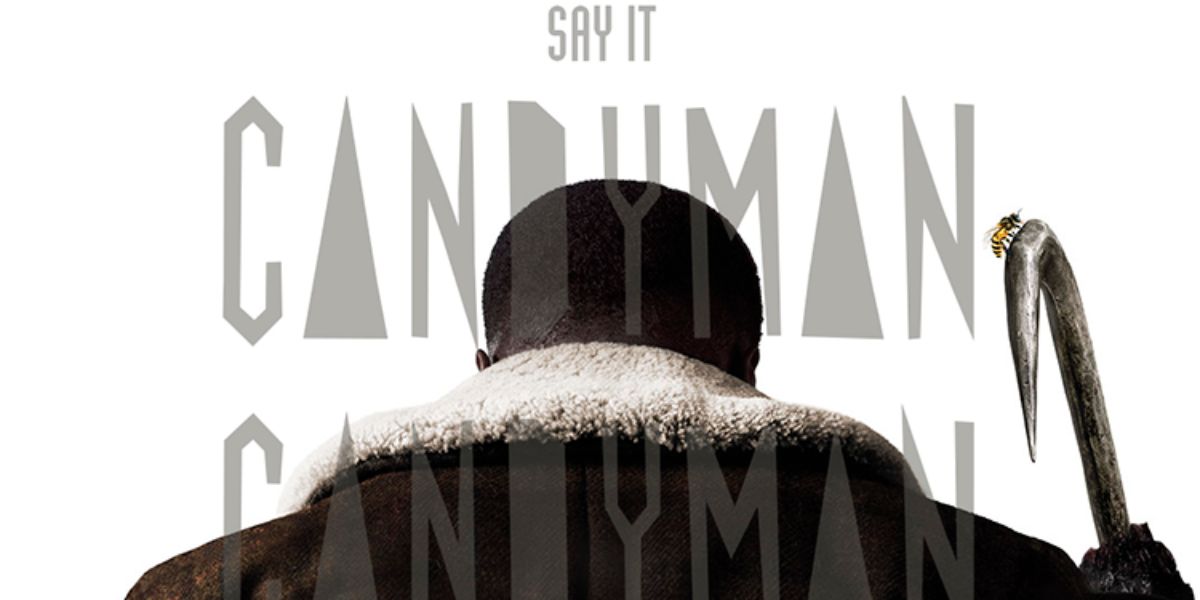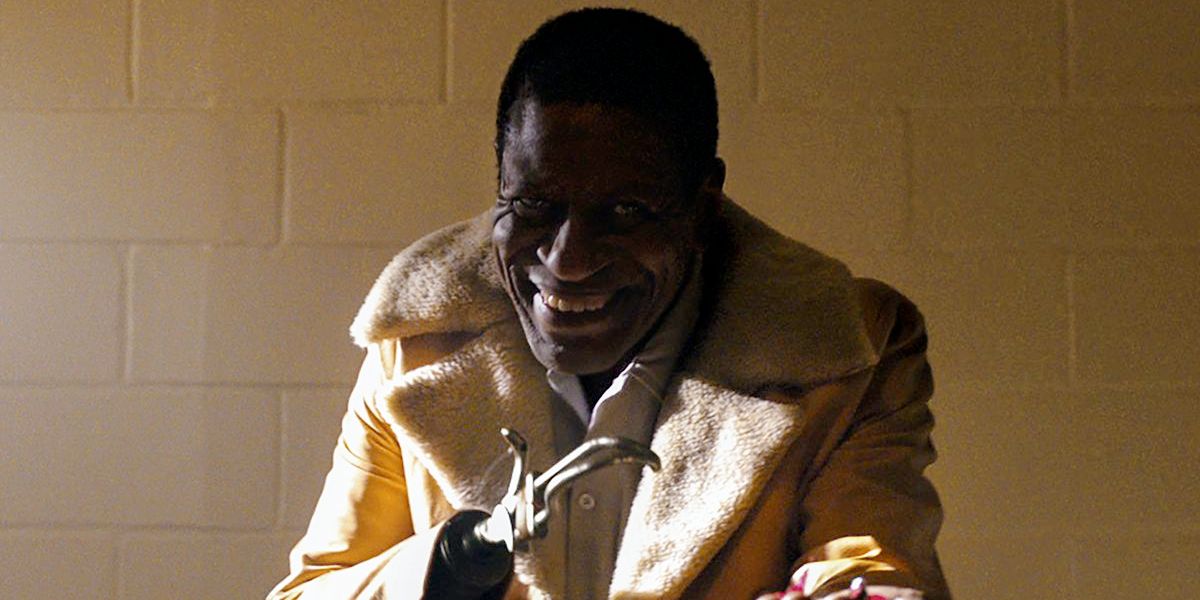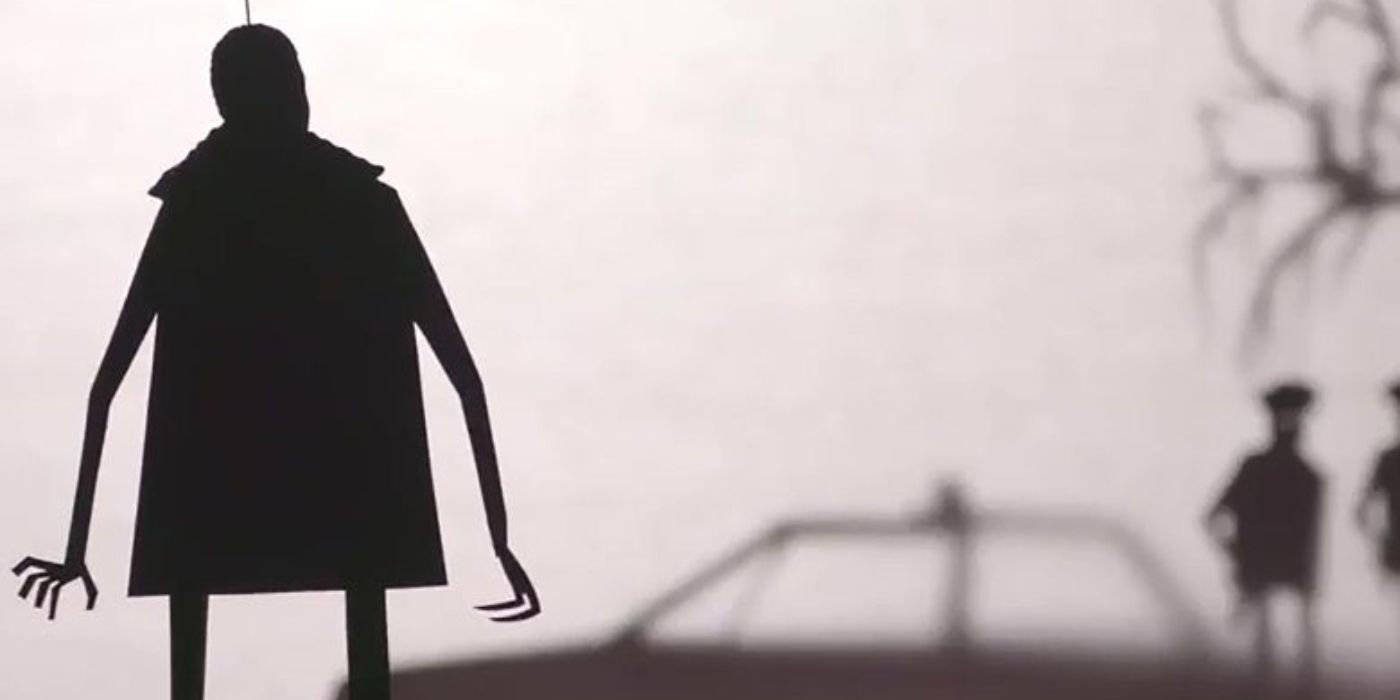WARNING: The following contains spoilers for Candyman, now playing in theaters.
Nia DaCosta's new film Candyman is not short on scares and scenes of true horror, but it also carries a strong theme about the marginalization of the Black community in America and the hardships they face as a result of racially motivated violence and discrimination. The film not only works as a sequel to the original film, but it also expands on the mythology of the Candyman legend and introduces new lore that helps to further the overall themes. The movie's best scare also happens to be its most insightful, as it is significantly tied into the film's theme.
In the original 1992 movie, the Candyman was the spirit of a man named Daniel Robitaille. He haunted and terrorized the housing project of Cabrini-Green in Chicago after he was tortured and murdered by a mob of white men when they learned of his relationship with a white woman. The new film introduces the expanded mythology that Candyman is not actually a singular person: Robitaille was just the first. Candyman is actually several different Black men who were all murdered as a result of racism. While Robitaille does make an appearance in the new film, the main Candyman is actually a man named Sherman Fields, whose story is told by William Burke, a local man obsessed with the Candyman legend.
Sherman Fields was a resident of Cabrini-Green in the 1970s who was known around the community for having a hook hand and for giving candy to children. One day, some children found razor blades in their candy and the police assumed the person responsible was Fields. As a result, white police officers patrolled the housing project searching for him. A child at the time, Burke was doing laundry in the communal laundry room when Fields emerged from his hiding place in the walls of the building and startled the young boy. Burke's scream alerted the white police officers and they stormed the laundry room in droves.
However, when Fields emerges from the wall, he simply offers Burke some candy, which is totally safe and razor-free. Burke accepts some of the candy and turns to leave and continue with his day, completely safe and unharmed. This is when Candyman executes its most insightful and effective scare. As Burke is walking up the stairs to leave, the suspense builds until suddenly, the face of a white police officer appears in the window, which is the most impactful scare in the whole film.
The filmmaking used in this sequence clearly frames the officer as the real threat through the use of suspense, camera movement, music, and the performance of young Burke. Burke is right to be afraid of this officer. After he appears in the window, he opens the door to the basement where Fields has been hiding and leads a whole troop of officers to his location. There, the officers beat Fields to death so savagely, he is unrecognizable through his traumatic injuries. This leads to Fields' transformation into a Candyman.
Burke explains that Fields was later proven innocent when children continued to find razor blades in their candy after Fields' death. Fields may have been a little odd, but he was not violent or dangerous and he certainly did not deserve his brutal death. The reason this scare is so impactful is that the film does a brilliant job of putting the audience into Burke's perspective. Yes, Burke was startled when Fields emerged from the wall, but that moment didn't have the same sense of dread and terror that was present when Burke saw the white police office through the window.
Candyman's theme of racially motivated violence through interpersonal and systemic methods is put forth boldly and without apology. The characters not only openly discuss these themes, but they are also explored through the actual scares that audiences expect to see in a horror film. The movie capitalizes on those scares to push forward its themes.
The residents of the Cabrini-Green have every reason to be frightened, but it's not just of the Candyman legend. The fears of this community exist in the real world as a result of systemic racism. This is clearly demonstrated to maximum effect when young Burke is scared, and so is the audience, by the sudden appearance of a white police officer. Candyman smartly uses the expectations of the horror genre to push its themes to their maximum potential.
To see its true horrors, watch Candyman in theaters now.



